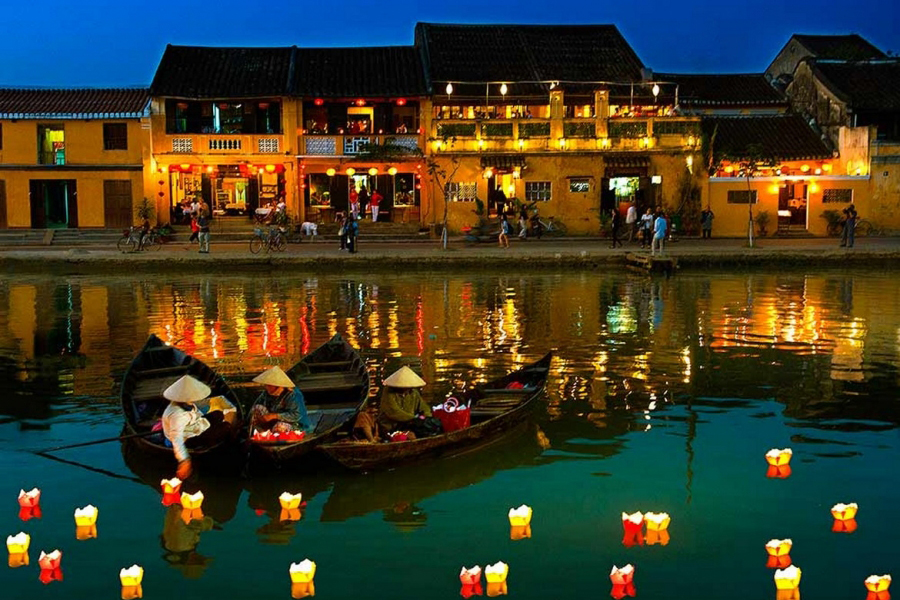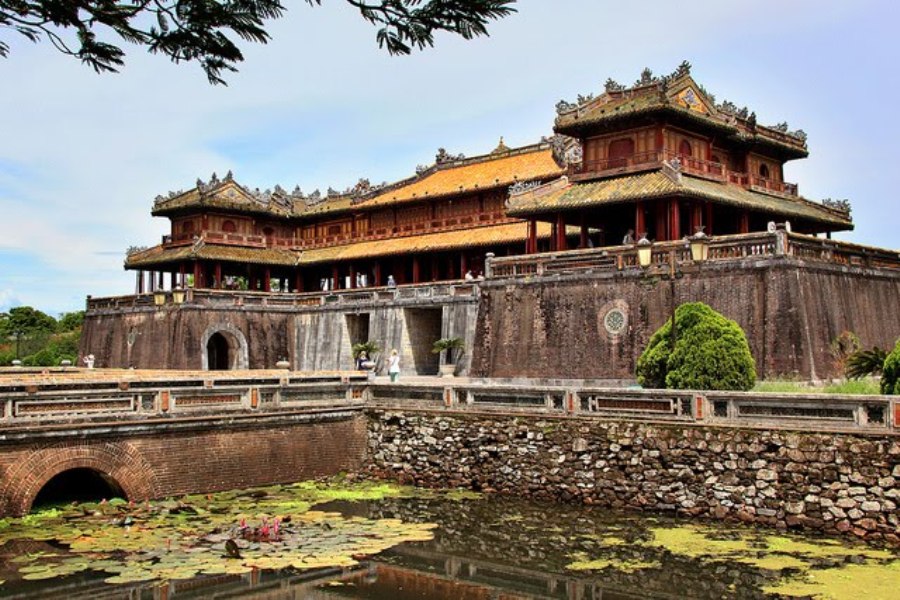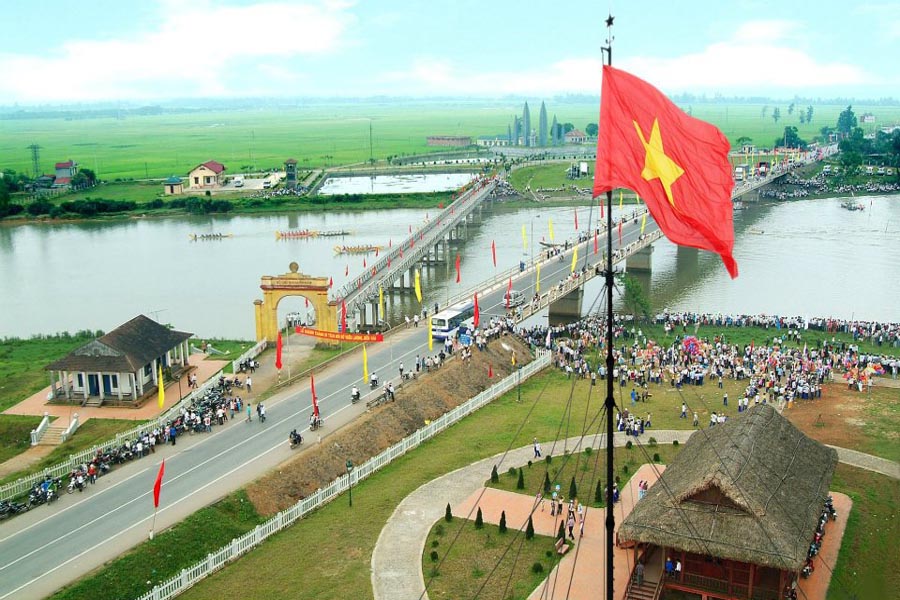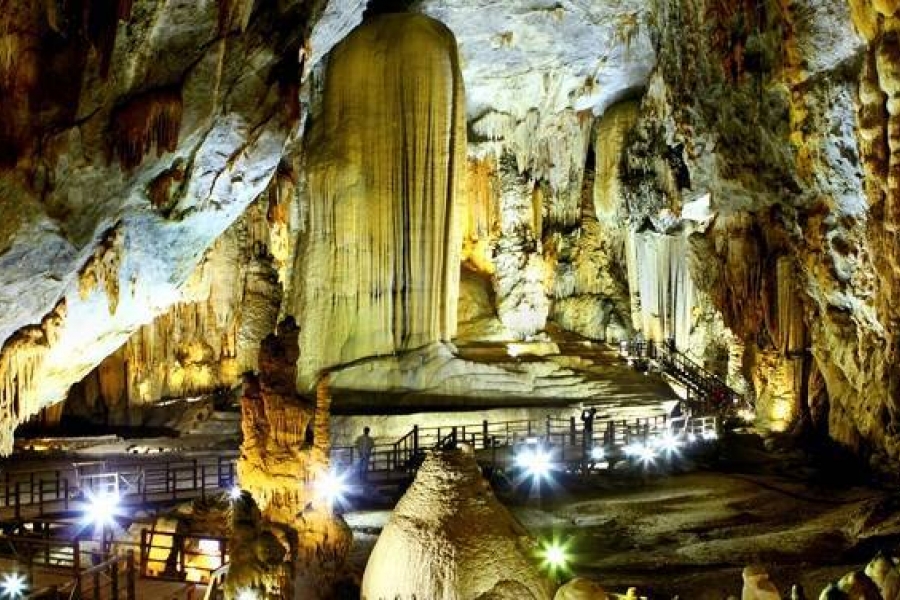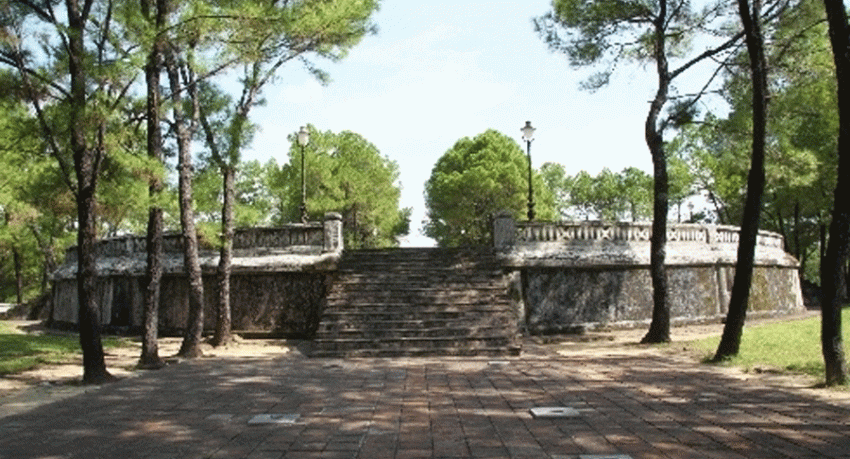In the feudal history, since Ly dynasty’s time, Nam Giao Explanade was established to worship god. In succeeding times, the designs of the worship terrace and worship ceremonies were more and more solemn and dignified. In the Nguye dynasty, right after being crowned (1802), emperor Gia Long had the terrace embanked in an Ninh village in 1803 to offer ceremonies to god. A few years after that, the dynasty left that psition and had another terrace built in Duong Xuan village in the south of Hue capital city (the remains are still preserved).

The Esplanade construction was commenced on 25th arch 1806. At the beginning of 1807, Gia Long dynasty had its fist god worship ceremonies there.
Nam Giao Esplanade is an open-air monument – the model of architecture bears both the religious and political signficance of oriental feudalism, in which the feudal power is combined closely with divine rights. Nam Giao Esplanade was built based on the dogma of heaven fate of confucianism. According to the dogma, the king was the son of god so he had divine rights. The structure of the terraces also shows the Universe of the prior times: cicular heaven and square earth.
Nam Giao Esplanade faces south. Its surrounding stone wall has four big open doors looking at four directions. In front of each door, one very screen (12.5m wide, 3.2m hight 0.8m thick) was erected . During the ceremony, all these doors big flags with ifferent colours: balck flags on the north door, blue on the east, red on the south and white on the west.
The sacrifice offering esplanade was designed with three terraces, one on top of another symbolizing oriental theory of tree agents: Heaven, Earth and Man. Earth terrace had its own shape and colour: cicular heaven, square earth, blue heaven, yellow earth. The topmost is called Vien Doanh, symbolizing heaven. The surrounding parapet was painted blue. On the ceremony day, poeple built on this layer a conical tent with blue cloth called Thanh oc. Right below is a square terrace called Phuong Dan, representing the Earth. The surrounding parapet is painted ywllow. On the sacrifice offering day, a square house with yellow cloth roof smaller tha the yellow tent was erected. During the ceremony, there were 128 students and dancers. The three layers are 4,65m ight in total. Shapes, colour and directions of the architecture of Nam Giao esplanade were based on the principles of Yin and Yang or principle of female and male or five basic elements (metal, wood, water, fire and earth).
From Gia Long’s time (1802 – 1819) the ceremony was organized in the first weeks or the firs month in linnar calendar every year. Sine 1890, for realizing that such a ceremony was too costly, Thanh Thai dynasty organized it once every three years: in the years of Ty, Mao, Ngo, Dau. It took the protocol and administration ministries many months to prepare for the ceremony. They had to buy tens of buffaloes, pigs and goats to fatten them up by fine and clean foods. For some days prior to the sacrific offering day, all village and cuymmunals in Thua Thie-Hue were ordered to complete making triumphal arches, to put alters on both sides of the route where the emperor would pass by from Ngo on gate to Trai Cung (fasting palace). For each ceremony, the emperor came to the fasting palace to stay there for three days. In Bao Dai’s time, the duration was reduced to one day. The emperor came from the citadel to Trai Cung accompanying by a procession called Ngu Dao including from 1.000 to 5.000 people. Ngu Dao could be 0.5km long consiting of royal family members, military and civil mandarins, soldiers, swords and spears, flags and fans, hangings, parasols, drums and gongs, elepant and horses, music bands and dancers, ect, who wore full dress uniforms with bright ornaments. The King sat on the sedan carried by royal soldiers in the middle path. When the Truong Tien bridge had not been built yet, the procession crossed the perfume river by buoy bridge made temporarily by boats.
The geat main ceremony began officialy at 2 a.m and lasted nearly 3 hours.
In the old time, many pine trees were grown in Nam Giao esplanade area. Each of the king’s relatives and high-ranking mandarins of the court grew oe pne. Besides the three layer terrace of Nam Giao esplanade, some fixed houses were built with tile roof such as Trai cung (divine kitchen), Than Kho (divine stone house). some other houses were built temporarily during the cermony days such as Thanh Oc, Hoang Oc, Quan Cu house, Khon Tiep house. All the sacrifice offering terraces of the Ly, Tran, Le, Tay Son dynasties do not exist any more. Nam Giao esplanade of the Nguyen dynasy is the unique one left relatively undamaged. To visit it, tourists can have a chance to understand more about many aspects of the cultural and life of the Vietnamese feudalism.
Copyright by Phong Nha Pioneer Travel
Categories: Blog
